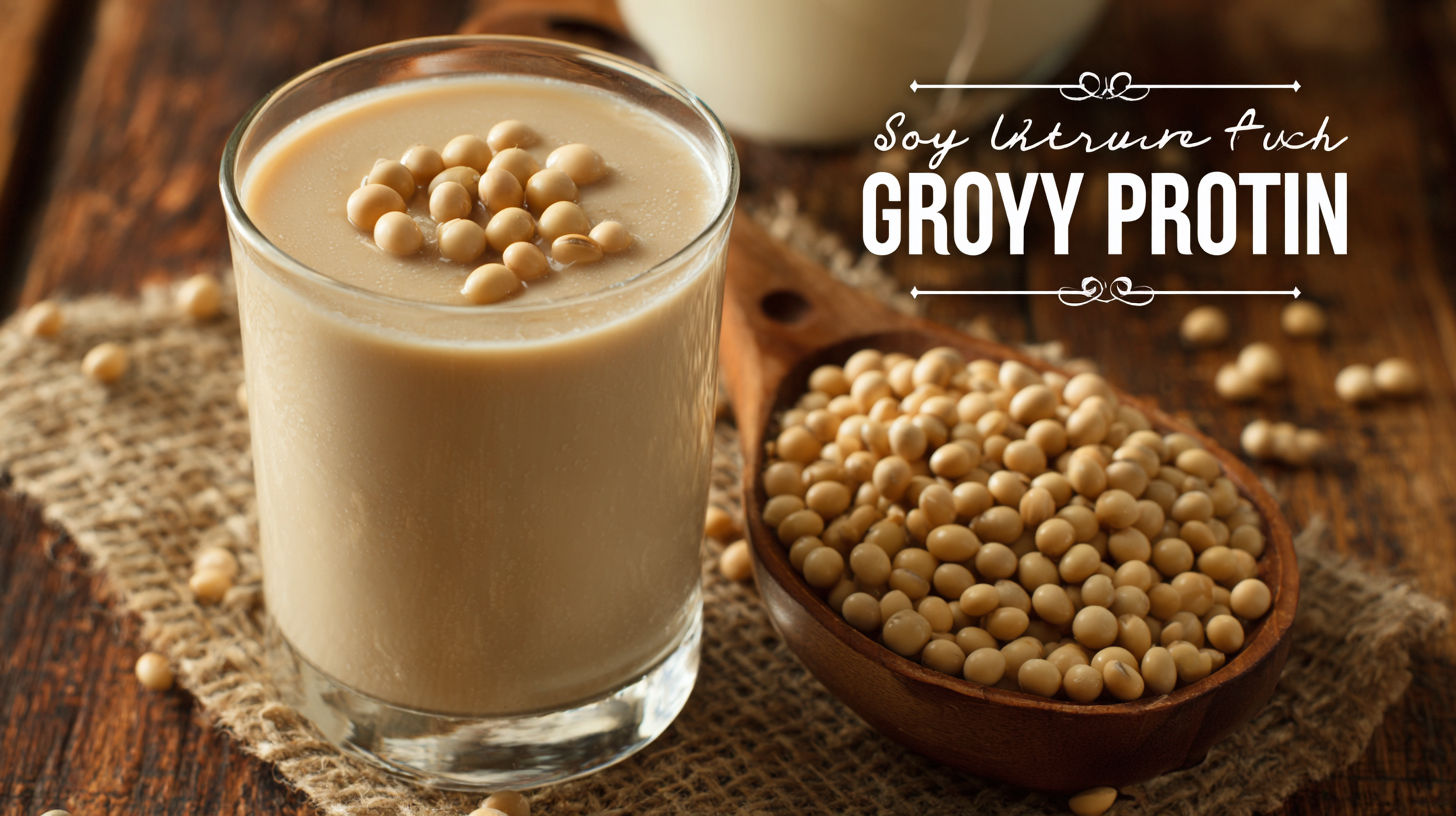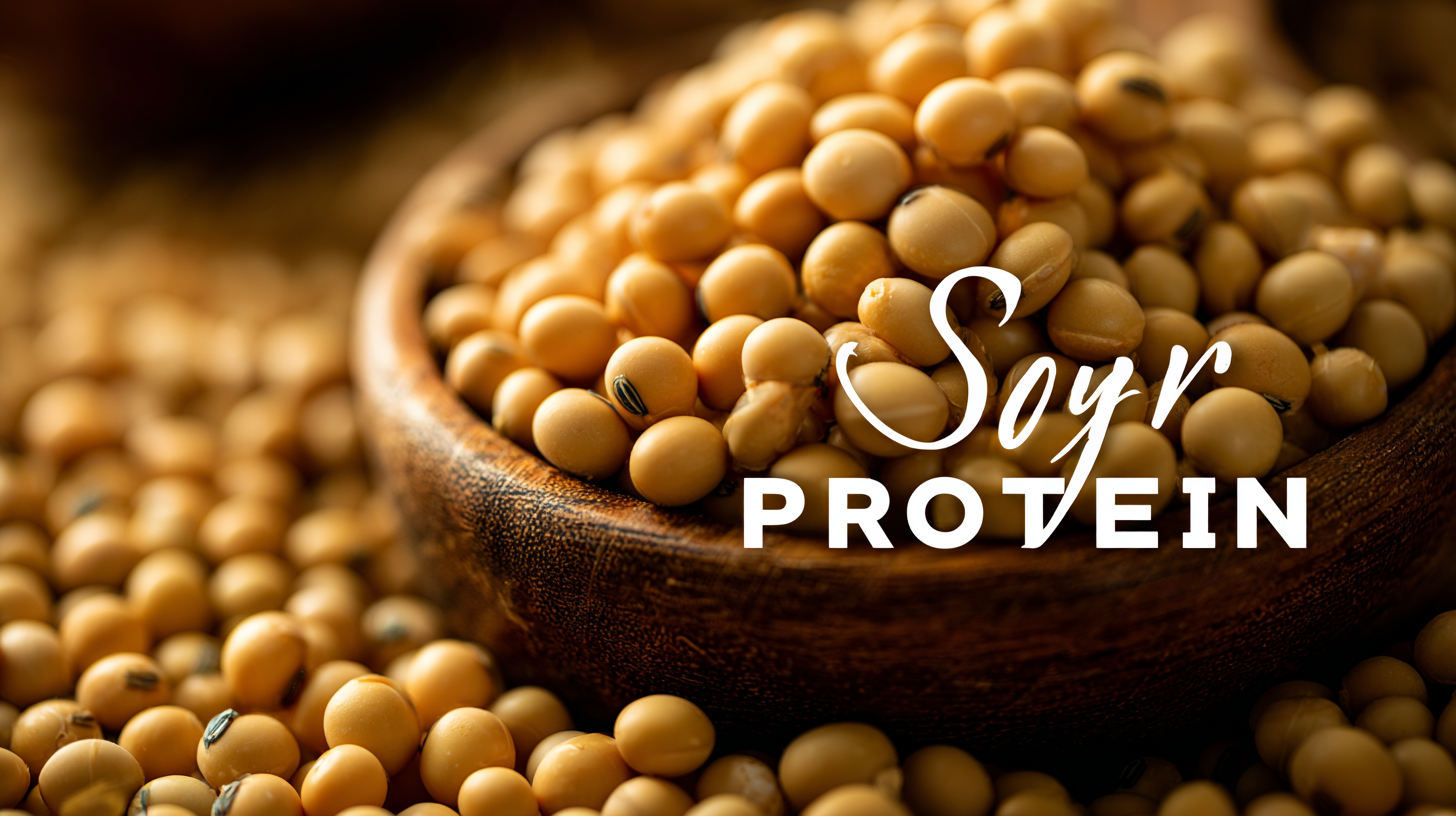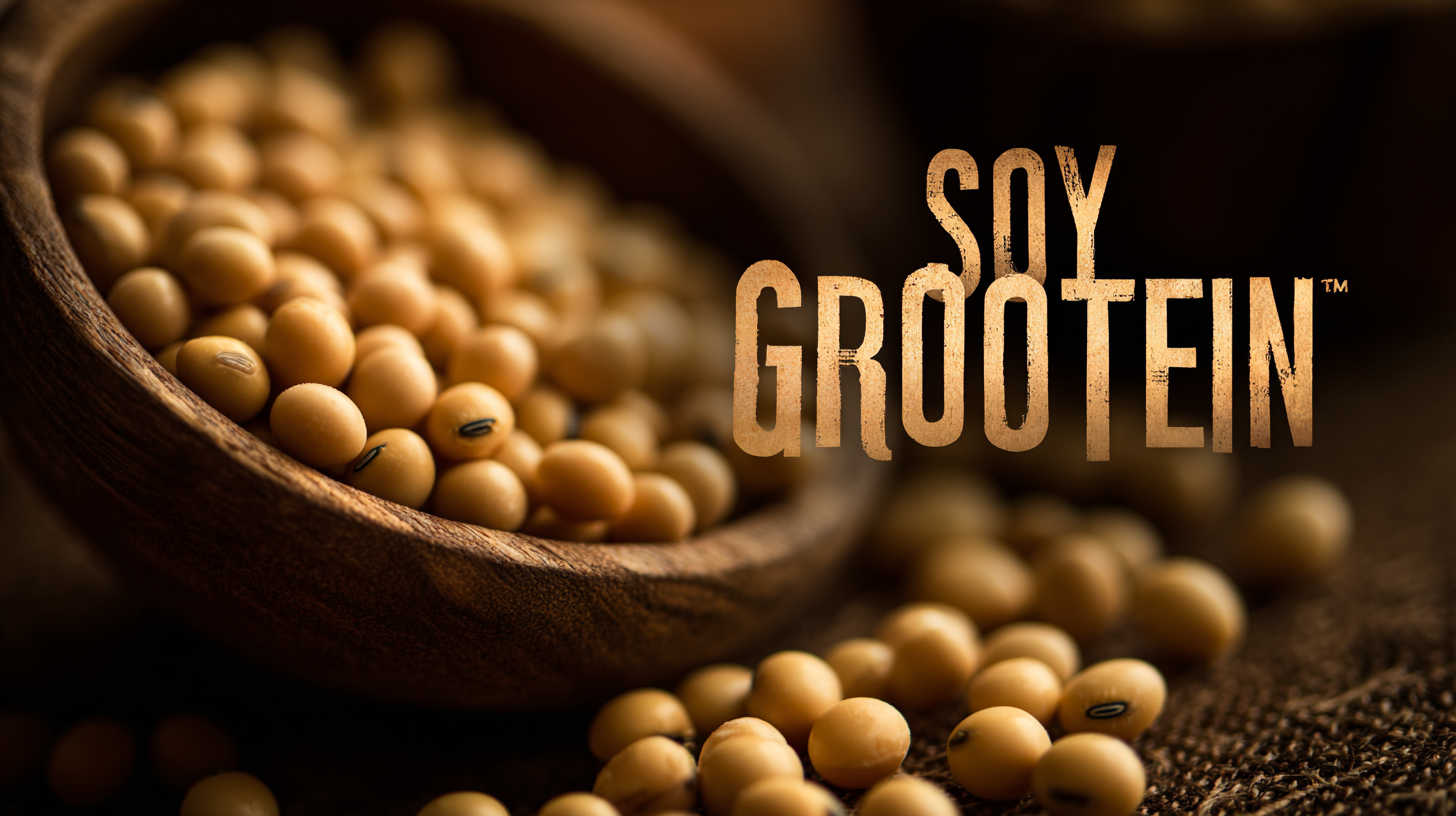In today's health-conscious world, the demand for high-quality protein sources continues to rise, and soy protein stands out as a remarkable option for those seeking optimal growth. This guide, titled "The Ultimate Guide to Sourcing the Best Soy Protein for Optimal Growth Worldwide," aims to illuminate the benefits of soy protein growth and how it can be effectively incorporated into diets across the globe. With its rich amino acid profile, soy protein not only supports muscle development but also offers a plant-based alternative that caters to diverse dietary preferences. As we delve into the best sourcing practices, nutrient profiles, and the environmental impacts of soy production, readers will gain valuable insights into how to select the finest soy protein products that contribute to healthier lifestyles and sustainable growth. Join us on this enlightening journey to unlock the potential of soy protein for achieving optimal health and growth on a global scale.

Soy protein plays a crucial role in global nutrition strategies aimed at optimizing growth, particularly as the world faces increasing challenges related to food security and dietary health. Rich in essential amino acids, soy protein not only supports muscle development and overall bodily functions but also serves as a sustainable alternative to animal-based proteins. This makes it an invaluable component for both vegan diets and for individuals seeking to reduce their environmental footprint.
As the demand for plant-based proteins surges—projected to reach a market size of USD 23.82 billion by 2033—soy protein emerges as a front-runner in this expansive sector. Its nutritional equivalency, coupled with a lower carbon footprint compared to animal proteins, positions it as a vital ingredient in formulating effective nutritional strategies worldwide. Emphasizing the importance of soy protein can help address nutritional deficiencies and enhance the overall health of populations, making it a key player in the quest for optimal global growth.
| Nutritional Aspect | Soy Protein Concentrate | Soy Protein Isolate | Textured Soy Protein |
|---|---|---|---|
| Protein Content (grams per 100g) | 70 | 90 | 50 |
| Amino Acid Profile | Complete | Complete | Incomplete |
| Fat Content (grams per 100g) | 1.5 | 1.0 | 4.0 |
| Carbohydrates (grams per 100g) | 25 | 5 | 30 |
| Ideal Use Cases | Smoothies, Protein Bars | Baking, Supplement Shakes | Meat Alternatives, Soups |
When sourcing high-quality soy protein for diverse applications, several key factors come into play. First and foremost, the protein concentration is crucial; products should boast a protein content of at least 90% to ensure maximum nutritional benefit. According to a report from the Global Soy Protein Market, the demand for soy protein isolate is expected to grow at a CAGR of 6.5% from 2023 to 2030, underscoring the need for sourcing options that meet this rising demand while maintaining quality standards.
In addition to concentration, the source of the soybeans significantly impacts the quality of the protein. Non-GMO and organic certifications are often sought after, reflecting consumer preferences and market trends. A study published by the Journal of Agricultural and Food Chemistry indicated that non-GMO soy protein not only offers superior amino acid profiles but also contributes to cleaner labeling, an increasingly important factor for consumers.
Tips: Always verify the protein's amino acid profile to ensure it meets the specific nutritional needs of your application. Additionally, consider supplier transparency regarding sourcing practices to establish trust and accountability in your supply chain. Lastly, conduct a sensory evaluation to assess taste and texture, as these factors can significantly influence consumer acceptance in food products.
 Soy protein has emerged as a leading source of plant-based nutrition, well-regarded for its robust nutritional profile that plays a pivotal role in optimizing growth metrics globally. According to a report by the Food and Agriculture Organization, soy protein contains all nine essential amino acids, making it a complete protein source. This is particularly beneficial for individuals, such as athletes and bodybuilders, seeking to enhance muscle growth and recovery. Additionally, soy protein is rich in vitamins and minerals such as calcium, iron, and magnesium, which are crucial for sustaining metabolic functions and bone health.
Soy protein has emerged as a leading source of plant-based nutrition, well-regarded for its robust nutritional profile that plays a pivotal role in optimizing growth metrics globally. According to a report by the Food and Agriculture Organization, soy protein contains all nine essential amino acids, making it a complete protein source. This is particularly beneficial for individuals, such as athletes and bodybuilders, seeking to enhance muscle growth and recovery. Additionally, soy protein is rich in vitamins and minerals such as calcium, iron, and magnesium, which are crucial for sustaining metabolic functions and bone health.
When sourcing soy protein, it’s critical to consider its digestibility and bioavailability. Research indicates that soy protein isolate has a Protein Digestibility-Corrected Amino Acid Score (PDCAAS) of 1.0, aligning it with animal-based proteins in terms of quality. For optimal growth, it's advisable to choose soy protein products that are minimally processed and free from additives.
Tips: Always check for certifications like Non-GMO Project Verified or Organic labels to ensure that the soy protein you select is of high quality. Additionally, incorporating soy protein into a diverse diet can enhance its benefits; pair it with whole grains for a balanced amino acid profile. For those concerned about estrogen levels, opting for fermented soy products such as tempeh can provide the advantages of soy while mitigating potential hormonal effects.
As the health and wellness sector continues to evolve globally, the demand for plant-based protein sources, particularly soy protein, is witnessing remarkable growth. In 2023, the global pea protein market is estimated to be valued at approximately $1.8558 billion, with a projected compound annual growth rate (CAGR) of 7.53% from 2024 to 2031. This surge in demand reflects a broader trend towards alternative protein sources, driven by a rising consumer preference for health-conscious products.

Additionally, the market for cricket farming is expected to reach $83.19 million in 2024, with anticipated growth to $183.68 million by 2032, marking a CAGR of 9.20%. This increase in interest for insect-based protein is part of a larger movement towards sustainable and environmentally friendly protein sources. Furthermore, the fitness nutrition beverage sector is also booming, projected to grow from $137.62 million in 2024 to $269.63 million by 2032. As more consumers seek products that align with their health and fitness goals, the market for alternative proteins—including plant-based, microbial, and insect-based options— continues to expand, highlighting the evolving dynamics of the protein landscape worldwide.
Sustainable sourcing practices in soy protein production are becoming increasingly vital as the global demand for protein rises. Recent data indicates that American soybean meal exports are projected to grow by at least five percent annually over the next five years, highlighting the importance of sustainability in meeting this demand. The growth in soybean production not only supports food processors with reliable volumes but also positions soy as a ‘green flag’ for consumers concerned about environmental impact. With increasing scrutiny over sourcing, companies are prioritizing sustainable practices, ensuring that the soy used in their products is sourced responsibly.
In Brazil, efforts are underway to create a sustainable, deforestation-free soy supply chain. Collaborations with leading suppliers are essential to guarantee that soybean oil comes exclusively from responsibly managed resources. This initiative is critical not only for protecting biodiversity but also for fortifying resilient food systems that mitigate environmental impacts. With plant-based proteins being recognized for their low carbon footprints, integrating sustainable soy protein into food systems can play a pivotal role in addressing both nutritional needs and environmental responsibilities, positioning soy as a cornerstone of future sustainable food solutions.
